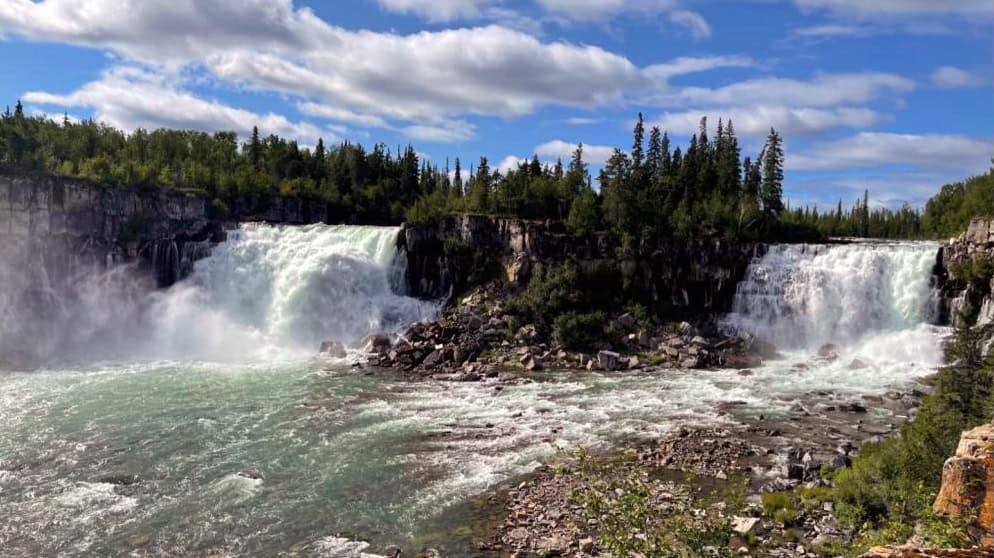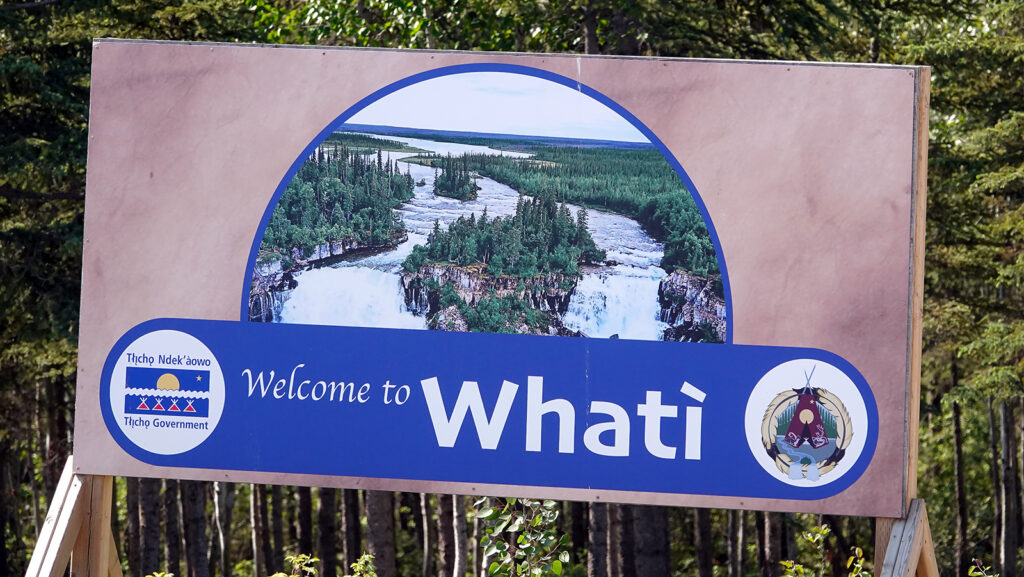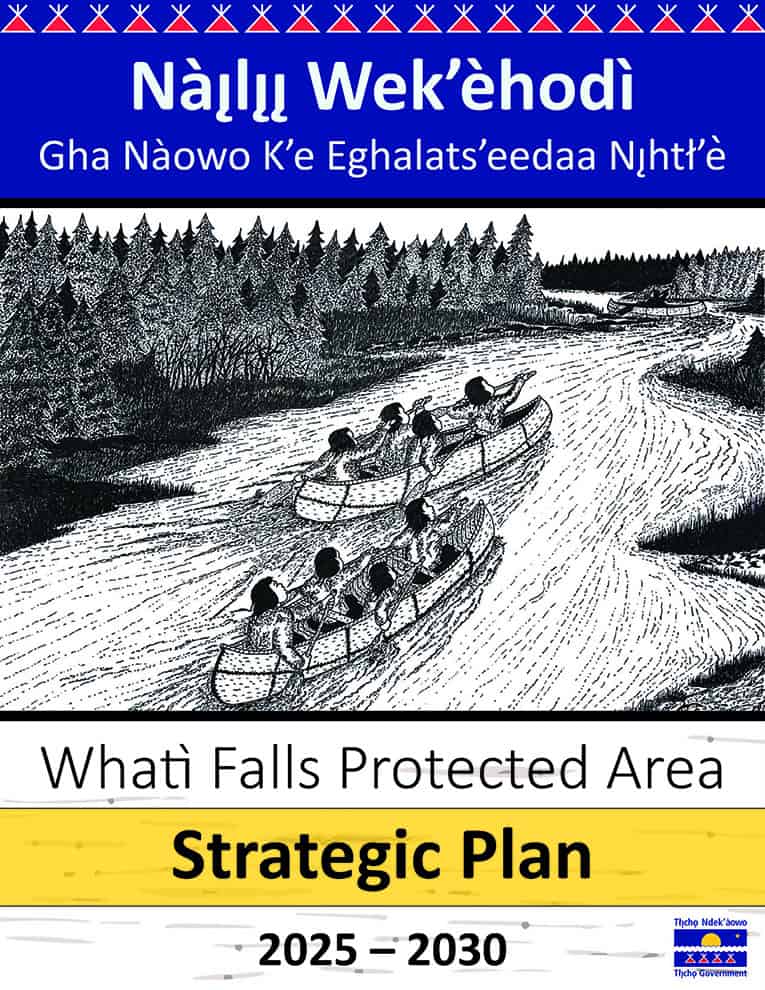Culture
Plans for mystical Whatı̀ Falls protected area revealed
History of waterfall, and stories associated with its supernatural properties, make it an important Tłıchǫ sacred site, says plan

A plan for the protected area encompassing Whatı̀ Falls predicts employment for Tłı̨chǫ citizens in the sacred and mystical area now accessible by vehicles that will need to be protected from tourists.
And those visitors to the historic site will also need to be protected from natural dangers, such as the cliffs around the falls, says a new five-year strategic plan from the Tłı̨chǫ Government, Department of Culture and Lands Protection and the community of Whatı̀.
- Whatì sign at entrance to community in the summer of 2025. (CKLB Files)
The Whatı̀ Falls Strategic Plan — Nàı̨lı̨ı̨ Wek’èhodì Gha Nàowo K’e Eghalats’eedaa Nı̨htł’è in Tłıchǫ Yatıì — outlines the vision for Whatı̀ Falls in the next five years as a significant ecological and cultural area of 137 square kilometres based on communities’ priorities.
Grand Chief Jackson Lafferty stated in a release from the 21st Tłı̨chǫ Government Annual Gathering in Behchokǫ̀ that the plan affirms the Tłıchǫ people’s responsibility as stewards of the land for future generations
He stated: “Nàı̨lı̨ı̨ holds deep cultural, spiritual, and ecological importance to the Tłı̨chǫ people. The Nàı̨lı̨ı̨ Strategic Plan represents an important step towards ensuring that this sacred area is respected and protected in accordance with our values, principles, and way of life.”
Whatı̀ Falls is accessible by the newly opened Tłı̨chǫ All Season Road and is a significant landmark outside the Whatı̀ community.
The plan was developed by Whatı̀ elders and youth under Tłı̨chǫ Government’s Department of Culture and Lands Protection over the last 18 months.
The Strategic Plan has outlined nine key areas to focus on:
- Protect and promote Nàı̨lı̨ı̨ and its spiritual significance.
- Uphold Gonàowo: community-led management and regulation following the Tłı̨chǫ heritage, language culture and way of life.
- Create local opportunities, sustainable economic growth and cultural preservation.
- Prioritize public safety.
- Establish visitor protocols.
- Celebrate and share Tłı̨chǫ heritage, culture, language and way of life.
- Design and maintain infrastructure.
- Research, collaborate and use best practices of indigenous environmental stewardship.
- Protect the environment: land, water and animals.
That last area includes restricted access to the falls to preserve their integrity and to discourage social and recreational activities that will generate loud noises in close proximity to the site.
Parking will be setback from the falls and overnight camping will be prohibited immediately adjacent to the Falls.
Employment opportunities will be in construction and other business contracts for supplies and services and in industries related to hospitality, service, and eco-cultural tourism.
The plan calls for the installation of safety infrastructure, including signage — in English and Tłıchǫ Yatıì — and fences at potentially unsafe locations, such as cliff edges.
The park infrastructure and amenities must also be accessible to elders, and those with mobility challenges.
The plan calls for educational materials that provide insights into the Tłıchǫ way of life, historical ̨ events, and cultural practices.
Until the 1980’s, the Whatı̀ Falls were only accessible by boat. Between 1980-90, an access road was built from Whatì, at that time was a fly-in only community).
Then, in November 2021, with the opening of Highway 9, or the Tłıchǫ Highway, made the falls accessible to the general public.
(Access the plan below here)



